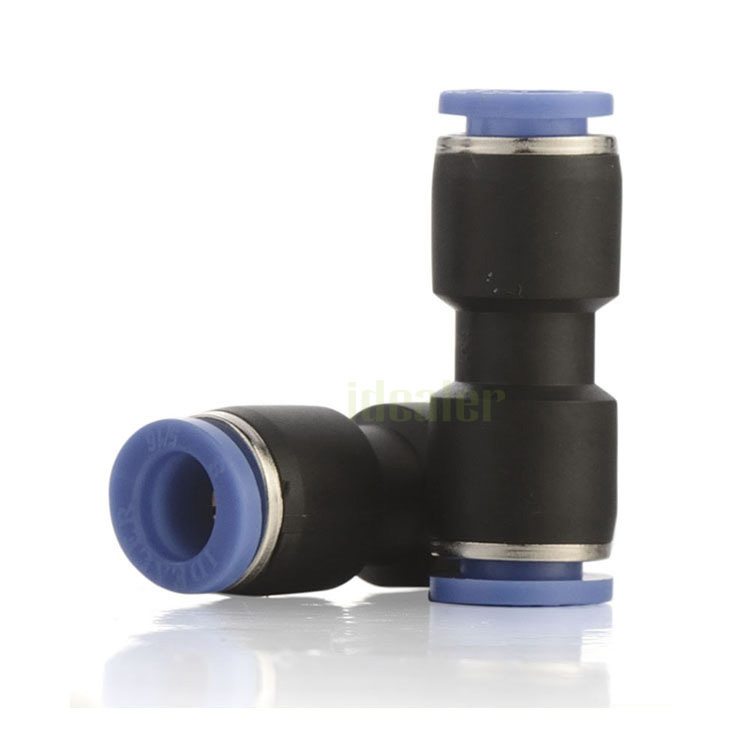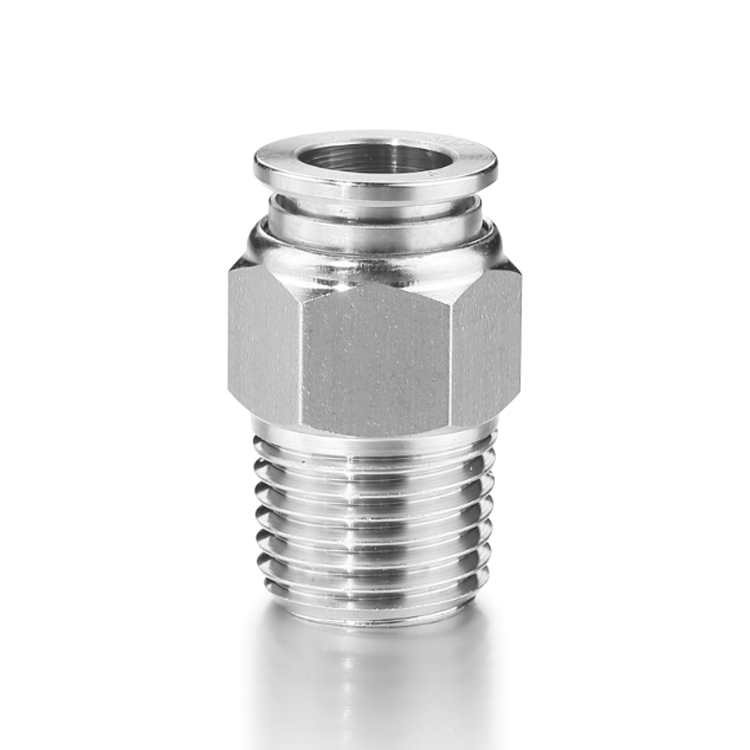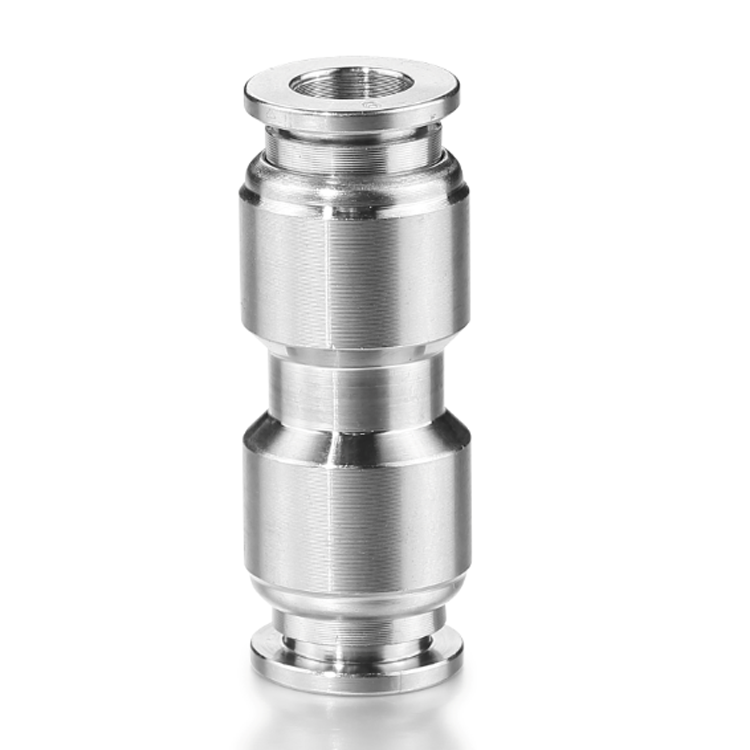Table of Contents
ToggleIntroduction
Push-to-connect pneumatic fittings are transforming the landscape of pneumatic systems by providing a seamless and efficient way to connect hoses and tubes. These innovative connectors are designed for quick assembly and disassembly, making them an essential component in various industrial applications. Understanding the functionality, advantages, and applications of push-to-connect fittings is crucial for anyone looking to optimize their pneumatic systems.
1. What Are Push-to-Connect Pneumatic Fittings?
Push-to-connect pneumatic fittings are specialized connectors that allow for the rapid and secure connection of hoses and tubes in pneumatic systems. Unlike traditional fittings that require tools for assembly, push-to-connect fittings enable users to simply push the tube into the fitting, creating a tight seal without the need for additional equipment.
Key Features
- Tool-Free Operation: The primary advantage of push-to-connect fittings is their ability to connect and disconnect without tools, saving time and effort. This feature is particularly beneficial in environments where quick adjustments are necessary.
- Versatile Design: These fittings are compatible with various tubing materials, including plastic and rubber, making them suitable for a wide range of applications. Their adaptability allows for use in different industries, from manufacturing to food processing.

2. How Do Push-to-Connect Fittings Work?
Push-to-connect fittings operate using a simple yet effective mechanism that ensures a secure connection. When a tube is inserted into the fitting, a collet mechanism grips the tube tightly, preventing it from coming loose.
Mechanism of Action
- Insertion: The user pushes the tube into the fitting until it reaches the internal stop. This initial step is straightforward and requires minimal effort.
- Collet Engagement: As the tube is inserted, a series of small teeth (the collet) engage with the outer surface of the tube, creating a tight grip. This design ensures that the connection remains secure even under pressure.
- Sealing: The fitting’s internal design ensures that air cannot escape, providing a leak-free connection. This sealing capability is crucial for maintaining system efficiency and preventing costly air loss.

3. What Are the Advantages of Push-to-Connect Fittings?
Push-to-connect fittings offer numerous advantages that make them a preferred choice in many applications. The advantages of push-to-connect fittings include ease of installation, time-saving benefits, versatility in applications, and reliable, leak-free connections.
- Ease of Installation:
- No tools are required, allowing for quick and straightforward assembly.
- Users can connect and disconnect fittings rapidly, which is especially beneficial in fast-paced environments.
- Time-Saving:
- Reduces assembly time, increasing overall productivity in operations.
- Quick adjustments can be made without interrupting workflow.
- Versatility:
- Compatible with various tubing materials and sizes, suitable for diverse applications.
- Can be used in different industries, including manufacturing, automotive, and food processing.
- Reliability:
- Provides a secure, leak-free connection that enhances system performance.
- The design minimizes the risk of disconnections, ensuring consistent operation.
4. What Materials Are Push-to-Connect Fittings Made From?
Push-to-connect fittings are manufactured from various materials, such as brass, stainless steel, and plastic, each chosen based on the specific requirements of the application.
| Material | Description | Applications |
|---|---|---|
| Brass | Durable and corrosion-resistant, ideal for high-pressure applications. | Used in industrial and automotive settings. |
| Stainless Steel | Offers excellent strength and resistance to corrosion, suitable for harsh environments. | Common in food processing and medical applications. |
| Plastic | Lightweight and cost-effective, suitable for low-pressure applications. | Often used in pneumatic systems for general use. |

5. Where Are Push-to-Connect Fittings Commonly Used?
Push-to-connect fittings are widely used across various industries due to their versatility and ease of use. They are commonly used in manufacturing, automotive, food processing, and medical equipment, providing reliable connections in various applications. Here are some details:
- Manufacturing: In assembly lines, push-to-connect fittings are used to connect pneumatic tools and machinery, allowing for quick adjustments and maintenance. Their ability to facilitate rapid changes helps maintain production efficiency.
- Automotive: These fittings are essential for connecting air tools and equipment in repair shops, facilitating efficient repairs and maintenance. The quick-connect feature allows mechanics to switch tools swiftly, reducing downtime.
- Food Processing: In environments where hygiene is critical, stainless steel push-to-connect fittings are used to ensure safe and clean operations. Their design minimizes contamination risks, making them ideal for food and beverage applications.
- Medical Equipment: Push-to-connect fittings are utilized in medical devices and equipment, where reliability and safety are paramount. Their secure connections help maintain the integrity of critical systems.

6. Can Push-to-Connect Fittings Be Reused?
Yes, push-to-connect fittings can often be reused, but it is essential to assess their condition before reinstallation. Here are some factors to consider:
Factors for Reuse
- Wear and Tear: Inspect fittings for any signs of damage, such as cracks or deformation, which can compromise their integrity. Regular inspections can help identify potential issues before they lead to failures.
- Compatibility: Ensure that the reused fitting is compatible with the existing components. Mismatched fittings can lead to leaks and system failures. Always check the specifications of the fittings to ensure they meet the requirements of your system.
- Maintenance: Regular maintenance, including cleaning and inspection, can extend the lifespan of push-to-connect fittings. Keeping a maintenance log can help track the condition of fittings over time.
Conclusion
Push-to-connect pneumatic fittings are a game-changer in the world of pneumatic systems, offering ease of use, reliability, and versatility. By understanding their functionality, advantages, and applications, you can make informed decisions that enhance the efficiency and safety of your operations. Whether you’re in manufacturing, automotive, or any other industry, considering push-to-connect fittings can lead to significant improvements in your pneumatic systems.
For more information on push-to-connect fittings or to explore our product options, feel free to contact us. Our team is here to help you find the best solutions for your pneumatic needs.

